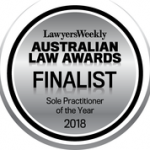The recent Federal Court judgment of Clipsal Australia Pty Ltd v Clipso Electrical Pty Ltd (No.3) [2017] FCA 60 has highlighted some important issues with how a trade mark protects one’s intellectual property.
Clipsal Australia Pty Ltd (Clipsal Australia) made a claim against Clipso Electrical Pty Ltd (Clipso Electrical) because of the similarities between their brand names and product. Interestingly, Clipsal Australia also included the Director of Clipso Electrical, Abdul Kader, as an individual because they believed that he was personally responsible, and therefore liable, for the breach of the trade marks.
Clipsal Australia alleged that Clipso Electrical, and Abdul Kader, engaged in misleading and deceptive conduct and attempted to pass off the Clipso Electrical products as those made and distributed by Clipsal Australia.
The Court held in Clipsal Australia’s favour, agreeing with all of the applicant’s claims bar one. Interestingly, the claim which Judge Perram did not accept was that Abdul Kader and Clipso Electrical had breached copyright by making light switches, namely dolly switches, that looked identical to those produced by Clipsal Australia. The Court dismissed this claim due to the functionality of the product in question.
Key Points from the Case
- The fact that both companies sold mainly to wholesalers (due to the fact many products must be installed by a licenced electrician) proved very important. The Court decided that while wholesalers and industry professionals would be unlikely to mistake a Clipso Electrical product for a Clipsal Australia one, the end-consumers who purchased wholesale or the like would be misled due to the similarities between the products, particularly their names.
- The fact that the Clipsal Australia trade marks were only intermittently registered formed part of the Clipso Electrical’s defence, but the defence failed. The Court held that because the trade marks had previously been registered, and were registered at the time of trial, Clipso Electrical could not claim that they were not in breach.
- Mr Abdul Kader, the director and owner of Clipso Electrical, had spent many years in the business of trading electrical goods. This proved to count against him, and contributed to the Court’s decision that his evidence was not credible. Due to the significant market share enjoyed by Clipsal Australia and Kader’s industry experience, the Court simply did not believe his assertions that he was ‘unaware’ of the Clipsal Australia brand.
- Clipsal Australia successfully argued that the Clipso Electrical trade mark had been registered in bad faith, and it was ordered that is be removed from the register. The Court agreed that under s88 of the Trade Marks Act 1995 (Cth) that the circumstances of the filing were likely to deceive or cause confusion and as such should be struck off.
- The Court held that Clipso Electrical, and Abdul Kader, had willingly and knowingly misled Energy Safe Victoria by relying on old certificates relating to existing products to fraudulently obtain new certificates under a new entity for different products. This proved further that their intentions were dishonest and they were attempting to circumvent the system so they would not be found out.
Checklist of items to take away from the case…
- When was the last time you reviewed your trade mark register? Are your trade marks registered or have they lapsed?
- Are you using new marks that should be registered?
- Are you using existing trade marks in different ways or in different classes to those in which those trade marks are registered?
- Consider whether or not you are using trade marks that are similar or deceptively similar as another.
- Even though a trade mark may have lapsed for whatever reason, there may still be some protection under the Trade Marks Act 1995 (Cth) if your trade mark was active at some point during the time when a competing mark is being used.
- A Court will consider the personal integrity of the directors of a company when determining the legitimacy of a trade mark.
- Industry experience was a key point in this case for both sides.
- The Courts will consider whether the registration was made in bad faith in determining if the use of the registered trade mark is likely to deceive or cause confusion in any application to cancel or amend a registration of a trade mark.
At Bryks Lawyers we have experience in advising on misleading and deceptive conduct and undertaking IP Audits. Start the conversation today!







